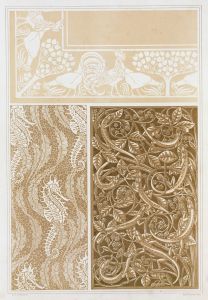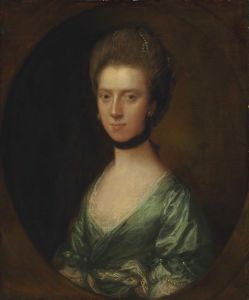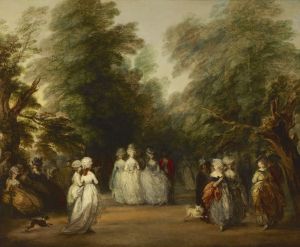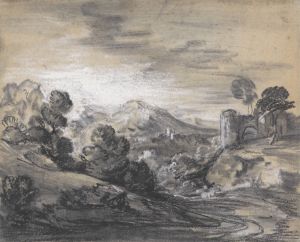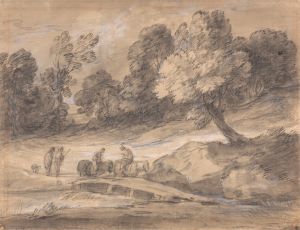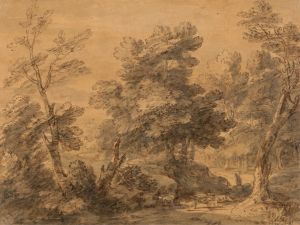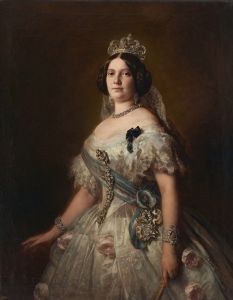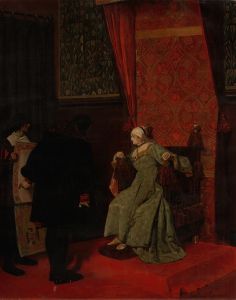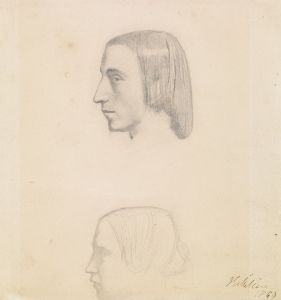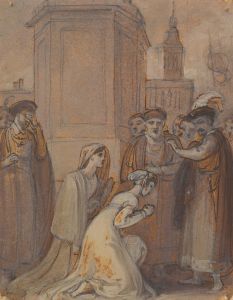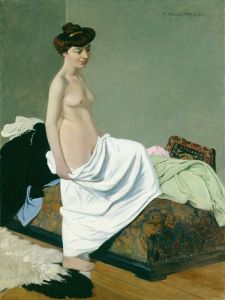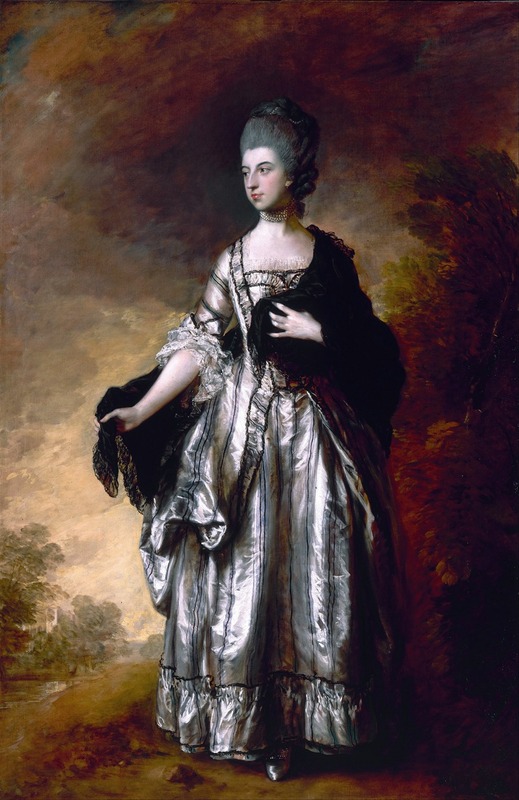
Isabella,Viscountess Molyneux, later Countess of Sefton
A hand-painted replica of Thomas Gainsborough’s masterpiece Isabella,Viscountess Molyneux, later Countess of Sefton, meticulously crafted by professional artists to capture the true essence of the original. Each piece is created with museum-quality canvas and rare mineral pigments, carefully painted by experienced artists with delicate brushstrokes and rich, layered colors to perfectly recreate the texture of the original artwork. Unlike machine-printed reproductions, this hand-painted version brings the painting to life, infused with the artist’s emotions and skill in every stroke. Whether for personal collection or home decoration, it instantly elevates the artistic atmosphere of any space.
Thomas Gainsborough's portrait of Isabella, Viscountess Molyneux, later Countess of Sefton, is a notable example of 18th-century British portraiture. Gainsborough, one of the most prominent portrait and landscape painters of his time, was known for his ability to capture the elegance and grace of his subjects, and this painting is no exception.
Isabella Stanhope, who became Viscountess Molyneux and later Countess of Sefton, was born into the British aristocracy. She was the daughter of William Stanhope, 2nd Earl of Harrington, and Lady Caroline FitzRoy. Her marriage to Charles William Molyneux, 1st Earl of Sefton, further elevated her status within the British nobility. The portrait by Gainsborough likely dates from around the time of her marriage or shortly thereafter, capturing her as a young woman of high social standing.
Gainsborough's work is characterized by his loose brushwork and his ability to convey the textures of fabric and the subtleties of skin tones. In this portrait, he employs a soft color palette and delicate brushstrokes to highlight Isabella's refined features and elegant attire. The background is typically understated, drawing attention to the sitter's face and expression, which is serene and composed.
The painting reflects the fashion and style of the period, with Isabella dressed in a gown that would have been considered fashionable among the elite of 18th-century England. Gainsborough's attention to detail in rendering the lace and silk of her dress, as well as the soft curls of her hair, demonstrates his skill in portraying the opulence of his subjects' attire.
Gainsborough was known for his ability to flatter his subjects while still capturing their likeness, a skill that made him a favorite among the British aristocracy. His portraits often convey a sense of the sitter's personality and social status, and the portrait of Isabella is no exception. It presents her as a figure of grace and poise, befitting her position in society.
The painting is part of the collection at the Walker Art Gallery in Liverpool, which houses a significant number of works by Gainsborough and other prominent artists of the period. The gallery's collection provides insight into the art and culture of 18th-century Britain, with Gainsborough's portraits being among the highlights.
Overall, the portrait of Isabella, Viscountess Molyneux, later Countess of Sefton, is a testament to Gainsborough's skill as a portraitist and his ability to capture the elegance and sophistication of the British aristocracy. Through his masterful use of color, composition, and brushwork, Gainsborough has created a lasting image of a woman who was both a product and a patron of her time.





